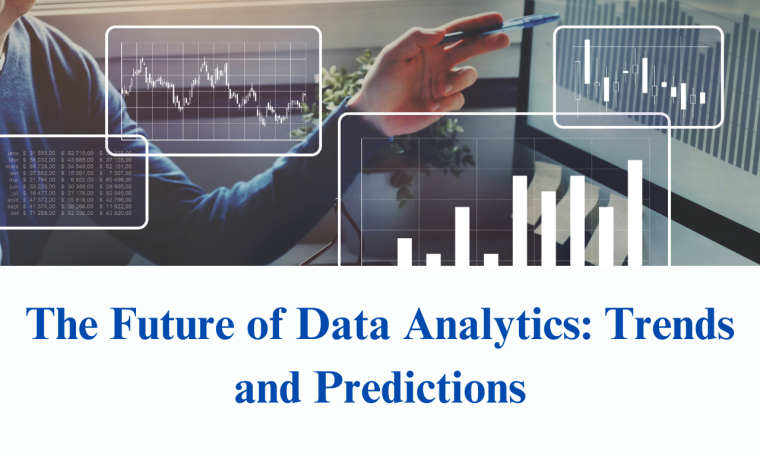
In today’s data-driven world, the landscape of Big Data Analytics is rapidly evolving, promising transformative changes across industries. From artificial intelligence’s role in predictive insights to the ethical considerations of data use, this article delves into the dynamic trends and predictions that are shaping the future of Big Data Analytics.
AI and Machine Learning in Big Data Analytics
Artificial Intelligence (AI) and Machine Learning (ML) have emerged as the driving forces behind the data analytics revolution. They are not merely buzzwords but integral components that are reshaping how organizations process, interpret, and derive value from data. In the world of Big Data Analytics, AI and ML hold the promise of unlocking deeper insights and making data-driven decisions more accessible.
These technologies are facilitating predictive analytics, enabling organizations to foresee trends, identify patterns, and optimize operations. AI-driven algorithms can process vast datasets in real-time, offering unparalleled speed and accuracy. Furthermore, automation within data analytics, powered by machine learning models, is reducing human intervention and enhancing decision-making processes. It allows for the creation of self-learning systems capable of adapting to changing data environments.
Big Data Analytics and Cloud Computing
The exponential growth of data in recent years has been nothing short of astounding. To effectively harness this data deluge, the synergy of big data and cloud computing has become indispensable in the realm of data analytics. Big data analytics enables organizations to process and derive insights from vast, diverse, and unstructured datasets. It’s not just about the volume of data but also the velocity and variety.
Big data analytics tools and frameworks, such as Hadoop and Spark, have made it possible to handle these complex data sets with relative ease. Cloud computing, on the other hand, has revolutionized data storage and processing. It offers scalability, accessibility, and cost-efficiency that on-premises solutions struggle to match. Cloud services like AWS, Google Cloud, and Microsoft Azure have made it more accessible for organizations of all sizes to leverage the power of big data analytics without the need for substantial infrastructure investments. The combination of big data and cloud computing has given birth to a new era in Big Data Analytics. It provides the agility needed to process large datasets and extract valuable insights without the constraints of physical hardware.
Ethical and Privacy Considerations
As data analytics continues to advance, so do the ethical and privacy concerns associated with its use. The ability to collect, analyze, and manipulate vast amounts of data has brought to the forefront critical questions about data ethics and individual privacy. One of the significant challenges is ensuring the responsible use of data. With increasing concerns about data breaches and misuse, businesses and organizations are under growing pressure to establish strong ethical frameworks for data analytic.
This includes ensuring transparency in data collection and usage, as well as obtaining informed consent from individuals. Regulations, such as the European Union’s General Data Protection Regulation (GDPR) and the California Consumer Privacy Act (CCPA), have been introduced to protect individuals’ data rights. These regulations have far-reaching implications for how data analytic is conducted and have created a global shift towards more stringent data protection and privacy standards. Moreover, issues of bias in data analytics have come to the forefront, as algorithms can perpetuate and amplify biases present in historical data. It’s imperative that data scientists and organizations actively address these biases and work to create more equitable and unbiased analytical models.
Data Visualization and Storytelling
In an age of data overload, effective data visualization and storytelling have emerged as pivotal tools in making sense of complex information and conveying insights to diverse audiences. The role of visualization in data analytics extends beyond aesthetics; it’s about accessibility and comprehension. Data visualization transforms raw data into interactive, digestible, and visually engaging representations. Modern tools and platforms, such as Tableau, Power BI, and Python libraries like Matplotlib and Seaborn, have empowered analysts to create captivating visuals that breathe life into data.
Equally important is the narrative that accompanies data. Storytelling in data analytics is about weaving a coherent and compelling narrative from the insights gained. By contextualizing data within a storyline, it becomes more accessible and relatable to both technical and non-technical audiences. As data analytics continues to evolve, the importance of data storytelling and visualization cannot be overstated. These techniques are essential for decision-makers to comprehend and act upon complex insights quickly. They are also invaluable for conveying data-driven insights to stakeholders and the general public.
Also Read- Embrace the RPM Revolution with Driven Software Development
Industry-Specific Applications
Data analytics is not a one-size-fits-all solution. It manifests differently across various industries, each with its unique challenges and opportunities. The ability to tailor data analytics to specific sectors is one of its most compelling aspects, as it has the potential to revolutionize operations and decision-making in countless fields. In healthcare, data analytic is transforming patient care, disease detection, and pharmaceutical research. Predictive analytics is helping doctors anticipate health issues, and AI is improving medical imaging interpretation. In finance, algorithms and data analytic models are optimizing investment strategies, detecting fraud, and managing risk.
The finance sector has been an early adopter of data analytics, and its applications continue to evolve. E-commerce relies on data analytic for personalized recommendations, inventory management, and customer experience enhancements. Retailers can make real-time pricing adjustments and deliver a tailored shopping experience through the power of data. Manufacturing and supply chain industries benefit from data analytic to streamline operations, optimize logistics, and reduce costs. IoT sensors and analytics enable predictive maintenance and enhance efficiency.
Conclusion
The future of data analytics is a promising yet complex landscape, driven by dynamic forces such as AI, big data, and the imperative of ethical considerations. As the world becomes increasingly data-centric, businesses and organizations must adapt to stay competitive and relevant. Data analytic will continue to be a cornerstone for informed decision-making, process optimization, and gaining a competitive edge. While challenges like data quality, algorithmic bias, and security persist, they are opportunities for growth and improvement. By investing in data quality, fostering a culture of ethics and transparency, and addressing bias, we can ensure that data analytic serves as a powerful, reliable tool. With emerging technologies on the horizon, such as quantum computing and explainable AI, the potential for innovation and discovery in data analytic is boundless.
As the landscape evolves, it’s crucial to stay informed and adapt to these changes. For those seeking to navigate this exciting field, finding the best data analytics certification training in delhi, Mumbai, Bangalore, Surat, Shimla, Bihar, etc., can be a transformative step toward a future that harnesses the full potential of data analytics, making informed and impactful decisions in an increasingly data-rich world.



